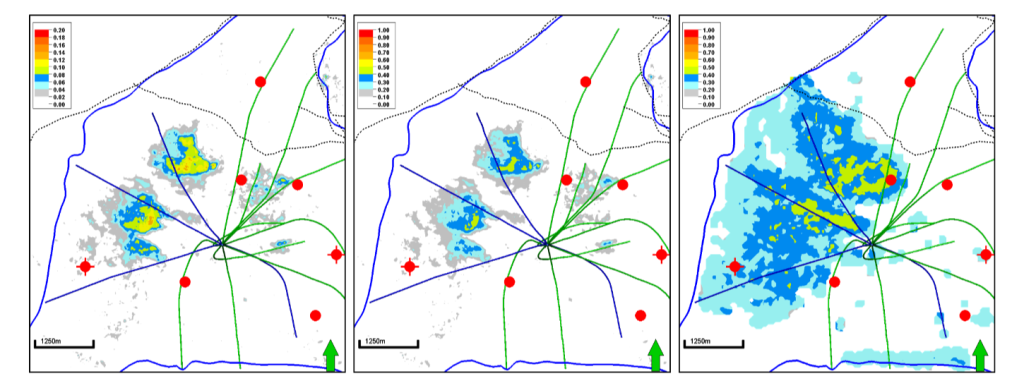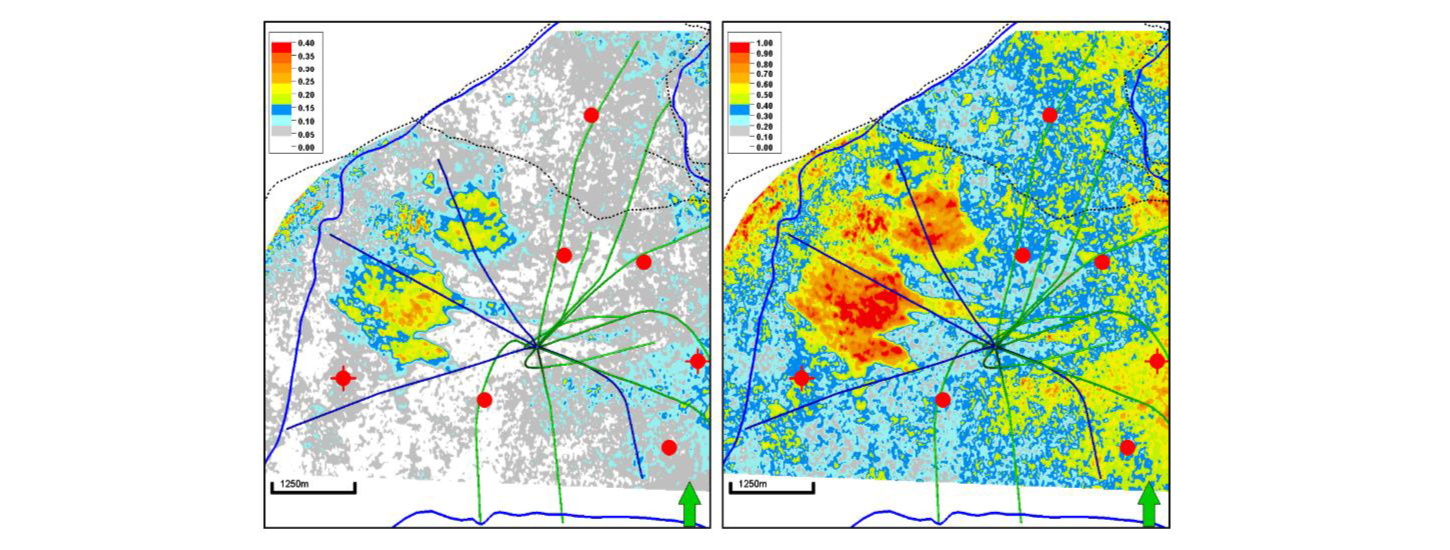BUSINESS CASE: PRODUCTION MONITORING
ESTIMATION OF SATURATION CHANGES AT THE EDVARD GRIEG FIELD USING SIMULTANEOUS 4D WAVE-EQUATION BASED AVO INVERSION
The Edvard Grieg oil field is located in the North Sea, approximately 180 kilometres west of Stavanger, Norway. The field is characterised by complex geology, with a combination of sandstones, shales, and siltstones. The main challenge in extracting oil from the field is the high variation in reservoir properties, which makes it difficult to predict the distribution of oil and water. Additionally, the field is subject to high pressure and temperature conditions, which can cause issues with drilling and production. Despite these geological challenges, the Edvard Grieg field is considered to be one of the most important oil and gas fields in the North Sea, and is expected to continue producing for many years to come.
The Aeolian sandstone reservoirs are deposited at an approximate depth of 2,000m just beneath a relative thick layer of chalk of the Shetland Group. Due lateral variations in the thickness as well as its elastic rock properties, the chalk unit creates a seismic response which interferes with the reservoir response itself. In this case study WEB-AVO inversion has been successfully used to properly account for interbed multiples, mode conversions and transmission effects. In this way the seismic response from the chalk/reservoir combination could be translated into more accurate and reliable rock properties.
These rock properties were then converted into reservoir properties and successfully integrated into a reservoir simulation workflow. The figures below nicely demonstrate how Sim4D WEB-AVO inversion successfully solved for quantitative and time-lapse seismic consistent fluid changes, thereby overcoming limitations of previously used techniques.

The relative changes in compressibility as derived by Sim4D WEB-AVO inversion (left) can be translated into saturation changes (middle) using a relationship between the two parameters. Right most panel show the saturation change in the current simulation model for comparison. While the quantitative values are comparable, the reservoir simulation without integration of the WEB-AVO 4D results notably overestimates the areal saturation changes.

Alternatively, an NRMS-map from PP amplitude data (left) can be translated into saturation changes (right) using a similar relationship. Notice that in this case the estimated saturation changes exceed what is physically realistic in terms of fluid replacement. This is due to not being able to accurately correct for the time-shift induced amplitude changes, which have intrinsically been handled by WEB-AVO inversion correctly.

Project facts:
- Location: Central North Sea, Norway
- Field name: Edvard Grieg
- Operator: Lundin Energy
- Phase: Production
- Target depth: 2,500m
Keys to success:
- Accounting for the full elastic wave-field and the seismic interaction of a regional chalk unit (Shetland Group) with the underlying aeolian reservoir sands
- Using the more direct relationship between compressibility and oil saturation for improving the reservoir simulation results
Resources:
- Journal paper (Third-party publication in the Leading Edge)
Authors:
P.E. Dhelie1, V. Danielsen1, K.R. Straith1, A.O. Ndingwan1, J.A. Haugen1, A. Droujinina2, P. Doulgeris2, D. Gisolf2, P. Haffinger2, M. Zhang2Affiliations:1 Lundin Norway AS, 2Delft Inversion

